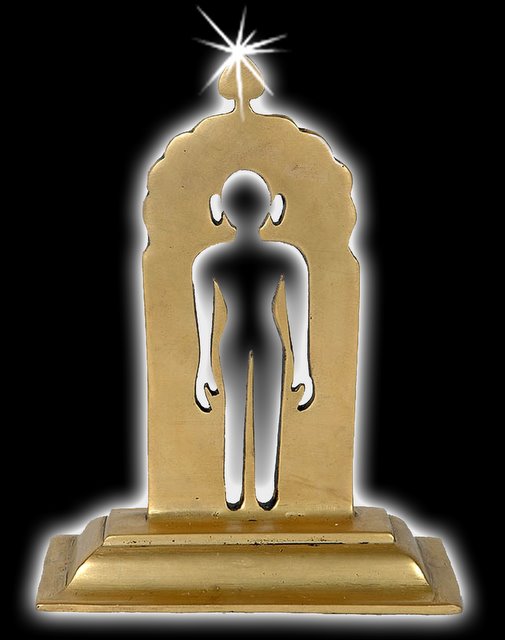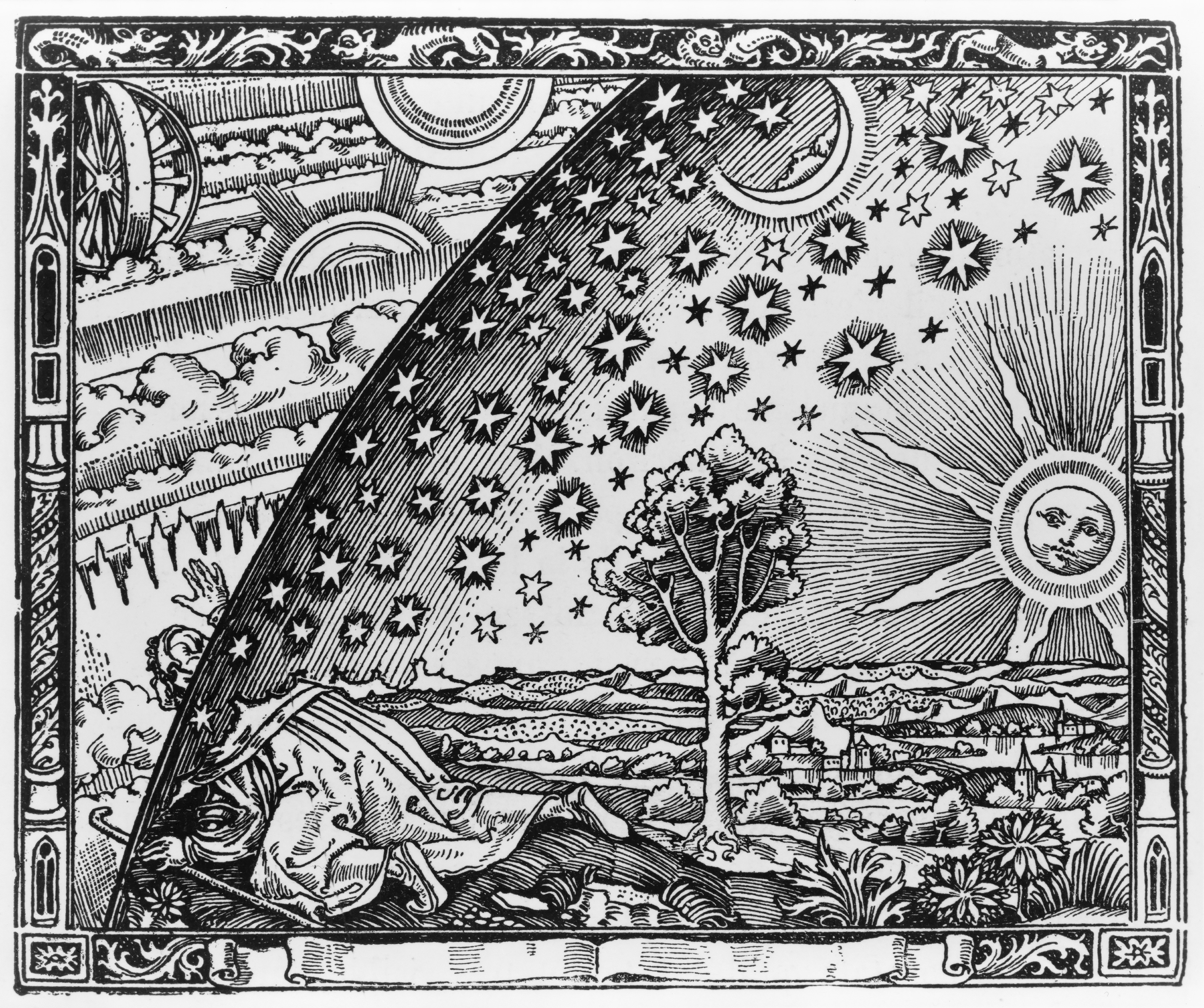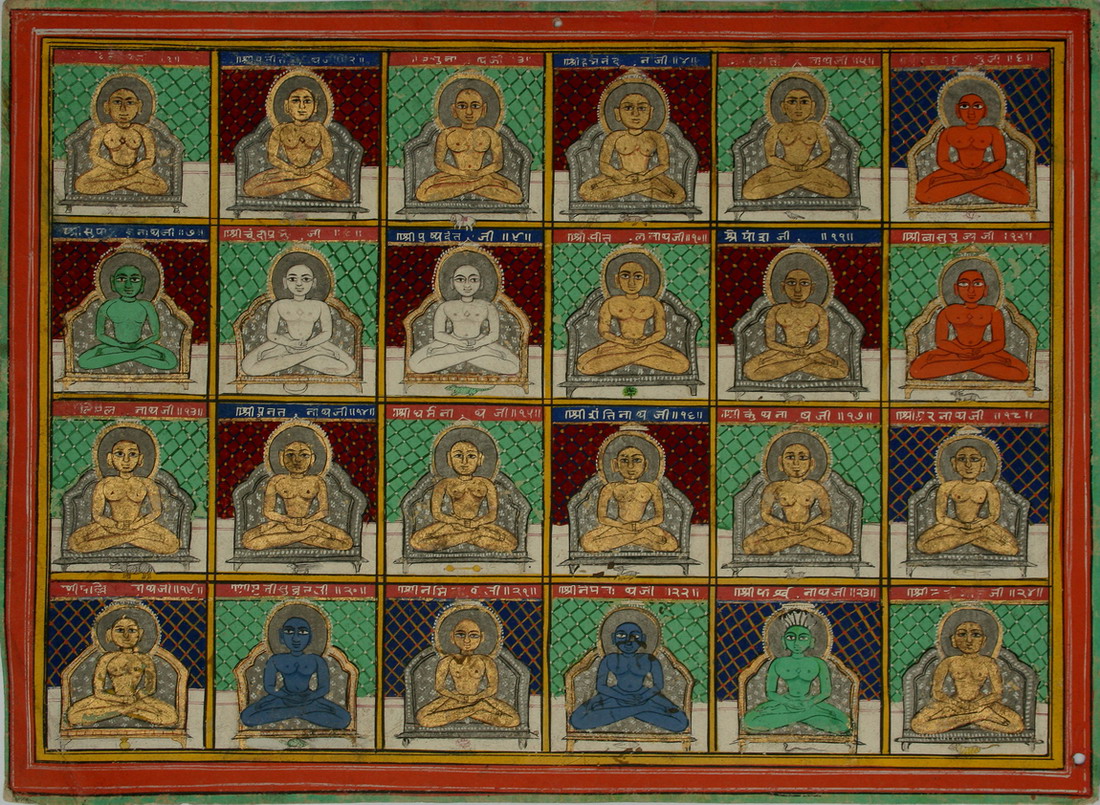|
God In Jainism
In Jainism, godliness is said to be the inherent quality of every soul. This quality, however, is subdued by the soul's association with karmic matter. All souls who have achieved the natural state of unlimited bliss, unlimited knowledge ('' kevala jnana''), unlimited power and unlimited perception are regarded as God in Jainism. Jainism rejects the idea of a creator deity responsible for this universe's manifestation, creation, or maintenance. Instead, souls (in this case, ''devis'' or ''devas'') who have reached Heaven for their merits and deeds influence the Universe for a fixed period until they undergo reincarnation and continue the cycle of enlightenment. According to Jain doctrine, the universe and its constituents (namely, soul, matter, space, time, and principles of motion) have always existed. All constituents and actions are governed by universal natural laws and a "perfect soul" (an immaterial entity that cannot create or affect a material entity like the unive ... [...More Info...] [...Related Items...] OR: [Wikipedia] [Google] [Baidu] |
Jainism
Jainism ( ), also known as Jain Dharma, is an Indian religions, Indian religion whose three main pillars are nonviolence (), asceticism (), and a rejection of all simplistic and one-sided views of truth and reality (). Jainism traces its spiritual ideas and history through the succession of twenty-four , supreme preachers of ''dharma''. The first in the current time cycle is Rishabhadeva, who tradition holds lived millions of years ago; the 23rd is Parshvanatha, traditionally dated to the 9th century Common Era, BCE; and the 24th is Mahāvīra, Mahavira, who lived . Jainism is considered an eternal ''dharma'' with the guiding every time cycle of the Jain cosmology, cosmology. Central to understanding Jain philosophy is the concept of ''bhedavijñāna'', or the clear distinction in the nature of the soul and non-soul entities. This principle underscores the innate purity and potential for liberation within every Jīva (Jainism), soul, distinct from the physical and menta ... [...More Info...] [...Related Items...] OR: [Wikipedia] [Google] [Baidu] |
Pravachanasara
''Pravacanasāra'' is a text composed by Jain monk Kundakunda in the second century CE or later. The title means "Essence of the Doctrine" or "Essence of the Scripture", and it largely deals with the correct ascetic and spiritual behavior based on his dualism premise. Kundakunda provides a rationale for nudity among Digambara monks in this text, stating that the duality of self and of others means "neither I belong to others, nor others belong to me, therefore nothing is mine and the ideal way for a monk to live is the way he was born". The text is written in Prakrit language, and it consists of three chapters and 275 verses. A modern English translation was published by Vijay K. Jain in 2020. Content First chapter consists of 92 verses and it describes attributes of supreme individual consciousnesses and outlines first steps of achieving that status. Second chapter consists of 108 verses and it describes laws of interaction between space, time particles, elementary matter p ... [...More Info...] [...Related Items...] OR: [Wikipedia] [Google] [Baidu] |
Atheistic
Atheism, in the broadest sense, is an absence of belief in the existence of deities. Less broadly, atheism is a rejection of the belief that any deities exist. In an even narrower sense, atheism is specifically the position that there no deities. Atheism is contrasted with theism, which is the belief that at least one deity exists. Historically, evidence of atheistic viewpoints can be traced back to classical antiquity and early Indian philosophy. In the Western world, atheism declined after Christianity gained prominence. The 16th century and the Age of Enlightenment marked the resurgence of atheistic thought in Europe. Atheism achieved a significant position worldwide in the 20th century. Estimates of those who have an absence of belief in a god range from 500 million to 1.1 billion people. Atheist organizations have defended the autonomy of science, freedom of thought, secularism, and secular ethics. Arguments for atheism range from philosophical to social approaches. ... [...More Info...] [...Related Items...] OR: [Wikipedia] [Google] [Baidu] |
Self
In philosophy, the self is an individual's own being, knowledge, and values, and the relationship between these attributes. The first-person perspective distinguishes selfhood from personal identity. Whereas "identity" is (literally) sameness and may involve categorization and labeling, selfhood implies a first-person perspective and suggests potential uniqueness. Conversely, "person" is used as a third-person reference. Personal identity can be impaired in late-stage Alzheimer's disease and in other neurodegenerative diseases. Finally, the self is distinguishable from "others". Including the distinction between sameness and otherness, the self versus other is a research topic in contemporary philosophy and contemporary phenomenology (see also psychological phenomenology), psychology, psychiatry, neurology, and neuroscience. Although subjective experience is central to selfhood, the privacy of this experience is only one of many problems in the philosophy of self and ... [...More Info...] [...Related Items...] OR: [Wikipedia] [Google] [Baidu] |
Saṃsāra (Jainism)
''Saṃsāra'' (transmigration)(Sanskrit: संसार, IAST: saṃsāra) in Jain philosophy, refers to the worldly life characterized by continuous rebirths and reincarnations in various realms of existence. is described as mundane existence, a life full of suffering and misery, and hence it is considered undesirable and worth renunciation. The ''Saṃsāra'' is without any beginning, and the soul finds itself in bondage with its karma since the beginning-less time. ''Moksha'' is the only way to be liberated from ''saṃsāra''. Influx of karmas (''asrava'') According to the Jain text ''Tattvartha Sutra ''Tattvārthasūtra'', meaning "On the Nature 'artha''of Reality 'tattva'' (also known as ''Tattvarth-adhigama-sutra'' or ''Moksha-shastra'') is an ancient Jain text written by ''Acharya (Jainism), Acharya'' Umaswami in Sanskrit betwee ...'': Activities that lead to the influx of karmas (''asrava'') which extends transmigration are: *Five senses *Four passions (' ... [...More Info...] [...Related Items...] OR: [Wikipedia] [Google] [Baidu] |
Devi
''Devī'' (; ) is the Sanskrit word for 'goddess'; the masculine form is Deva (Hinduism), ''deva''. ''Devi'' and ''deva'' mean 'heavenly, divine, anything of excellence', and are also gender-specific terms for a deity in Hinduism. The concept and reverence for goddesses appears in the Vedas, which were composed around the 2nd millennium BCE. However, they did not play a vital role in that era. Goddesses such as Durga, Kali, Lakshmi, Parvati, Radha, Saraswati and Sita have continued to be revered in the modern era. The medieval era Puranas witness a major expansion in mythology and literature associated with Devi, with texts such as the ''Devi Mahatmya'', wherein she manifests as the ultimate truth and supreme power. She has inspired the Shaktism tradition of Hinduism. Further, Devi is viewed as central in the Hindu traditions of Shaktism and Shaivism. Etymology ''Devi'' and ''deva'' are Sanskrit terms found in Vedic literature around the 3rd millennium BCE. ''Deva'' is masculi ... [...More Info...] [...Related Items...] OR: [Wikipedia] [Google] [Baidu] |
Siddha
''Siddha'' (Sanskrit: '; "perfected one") is a term that is used widely in Indian religions and culture. It means "one who is accomplished." It refers to perfected masters who have achieved a high degree of perfection of the intellect as well as moksha, liberation or Enlightenment in Buddhism, enlightenment. In Jainism, the term is used to refer to the liberated souls. ''Siddha'' may also refer to one who has attained a siddhi, paranormal capabilities. Siddhas may broadly refer to siddhars, naths, asceticism, ascetics, sadhus, or yogis because they all practice sādhanā. Jainism In Jainism, the term ''siddha'' is used to refer the liberated souls who have destroyed all Karma in Jainism, karmas and have obtained Moksha (Jainism), moksha.They are free from the transmigratory cycle of birth and death (''Saṃsāra (Jainism), saṃsāra'') and are above ''Arihant (Jainism), Arihantas'' (omniscient beings). Siddhas do not have a body; they are soul in its purest form. They r ... [...More Info...] [...Related Items...] OR: [Wikipedia] [Google] [Baidu] |
Arihantas
''Arihant'' (, ) is a jiva (soul) who has conquered inner passions such as attachment, anger, pride and greed. Having destroyed four inimical karmas, they realize pure self. ''Arihants'' are also called ''kevalins'' (omniscient beings) as they possess '' kevala jnana'' (pure infinite knowledge). An ''arihant'' is also called a ''jina'' ("victor"). At the end of their life, ''arihants'' destroy remaining ''karmas'' and attain ''moksha'' (liberation) and become '' siddhas''. ''Arihantas'' have a body while ''siddhas'' are bodiless pure spirit. The Ṇamōkāra mantra, the fundamental prayer dedicated to ''Pañca-Parameṣṭhi'' (five supreme beings), begins with ''Ṇamō arihantāṇaṁ'', "obeisance to the arihants". ''Kevalins'' - omniscient beings - are said to be of two kinds # ''Tirthankara kevalī'': 24 human spiritual guides who after attaining omniscience teach the path to salvation. # ''Sāmānya kevalī'': ''Kevalins'' who are concerned with their own liberatio ... [...More Info...] [...Related Items...] OR: [Wikipedia] [Google] [Baidu] |
Mahavrata
The Five Vows of Jainism include the ''mahāvratas'' (major vows) and ''aṇuvratas'' (minor vows). Overview Jain ethical code prescribes two '' dharmas'' or rules of conduct. One for those who wish to become ascetic and another for the ''śrāvaka'' (householders). Five fundamental vows are prescribed for both votaries. These vows are observed by '' śrāvakas'' (householders) partially and are termed as ''anuvratas'' (small vows). Ascetics observe these fives vows more strictly and therefore observe complete abstinence. These five vows are: * ''Ahiṃsā'' (Non-violence) * ''Satya'' (Truth) * '' Asteya'' (Non-stealing) * ''Brahmacharya'' (Chastity) * ''Aparigraha'' (Non-possession) According to the Jain text '' Puruşārthasiddhyupāya'': Apart from five main vows, a householder is expected to observe seven supplementary vows (''śeelas'') and last '' sallekhanā'' vow. ''Mahāvratas'' (major vows) ''Mahavrata'' (lit. major vows) are the five fundamental observed by the ... [...More Info...] [...Related Items...] OR: [Wikipedia] [Google] [Baidu] |
Cosmos
The cosmos (, ; ) is an alternative name for the universe or its nature or order. Usage of the word ''cosmos'' implies viewing the universe as a complex and orderly system or entity. The cosmos is studied in cosmologya broad discipline covering scientific, religious or philosophical aspects of the cosmos and its nature. Religious and philosophical approaches may include the cosmos among spiritual entities or other matters deemed to exist outside the physical universe. Etymology The verb wikt:κοσμέω, κοσμεῖν (''kosmein'') meant generally "to dispose, prepare", but especially "to order and arrange (troops for battle), to set (an army) in array"; also "to establish (a government or regime)", "to adorn, dress" (especially of women). Thus ''kosmos'' meant "ornaments, decoration" (compare ''kosmokomes'' "dressing the hair," and cosmetic). The philosopher Pythagoras used the term ''kosmos'' for the order of the universe. Anaxagoras further introduced the concept of a C ... [...More Info...] [...Related Items...] OR: [Wikipedia] [Google] [Baidu] |
Tirthankara
In Jainism, a ''Tirthankara'' (; ) is a saviour and supreme preacher of the ''Dharma (Jainism), dharma'' (righteous path). The word ''tirthankara'' signifies the founder of a ''Tirtha (Jainism), tirtha'', a fordable passage across ''Saṃsāra (Jainism), saṃsāra'', the sea of interminable birth and death. According to Jains, ''tirthankaras'' are the supreme preachers of ''dharma'', who have conquered ''saṃsāra'' on their own and made a path for others to follow. After understanding the true nature of the self or soul, the ''Tīrthaṅkara'' attains ''kevala jnana'' (omniscience). A Tirthankara provides a bridge for others to follow them from ''saṃsāra'' to ''moksha'' (liberation). In Jain cosmology, the wheel of time is divided into two halves, Utsarpiṇī', the ascending time cycle, and ''avasarpiṇī'', the descending time cycle (said to be current now). In each half of the cycle, exactly 24 ''tirthankaras'' grace this part of the universe. There have been infini ... [...More Info...] [...Related Items...] OR: [Wikipedia] [Google] [Baidu] |






